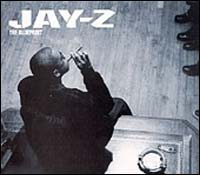
“Is hip-hop irrelevant?” asked a music writer in an e-mail circulated in the hip-hop community after September 11. Such self-examination is hardly confined to hip-hop these days, but it has added weight for a subculture that came to symbolize the late-nineties good life as much as the dot-com scene. And aside from P. Diddy, the genre’s most public face of turn-of-the-century opulence was Jay-Z, whose “Big Pimpin’ ” and “Money Ain’t a Thang” exulted in an irrational exuberance all their own. Some of the music he made defined the Zeitgeist, although it was among his weakest work.
The Blueprint (Roc-A-Fella/Def Jam) – which, Jay-Z pointed out at a New York concert, “dropped the same day as the towers” – might sound particularly off the mark now, as cultural critics rush to declare the end of irony. But regardless of the social and economic climate, the rapper’s rhymes still come off as yet another cataloguing of his Fortune 500 lifestyle, complete with kept women (“Girls, Girls, Girls”), VIP-room access (“Jigga That N***a”), and plain-old egoism ("Hola’ Hovito”).
Only inventive production by Gimel “Young Guru” Keaton hints at a life beyond the balance sheet. Keaton breathes new life into sampling, reimagining songs by the Doors, Bobby Byrd, and the Jackson 5, and provides some of the lushest orchestrations since the big-band soul of Isaac Hayes and Barry White. One hopes that as hip-hop grows smarter and more serious – whether that’s of the moment or not – there will be more M.C.’s able to match the restless imagination of its producers.